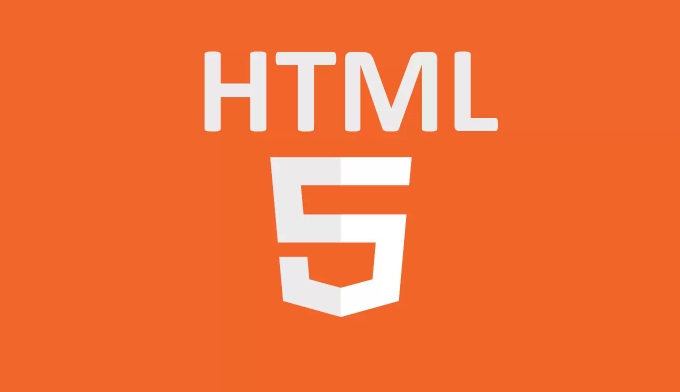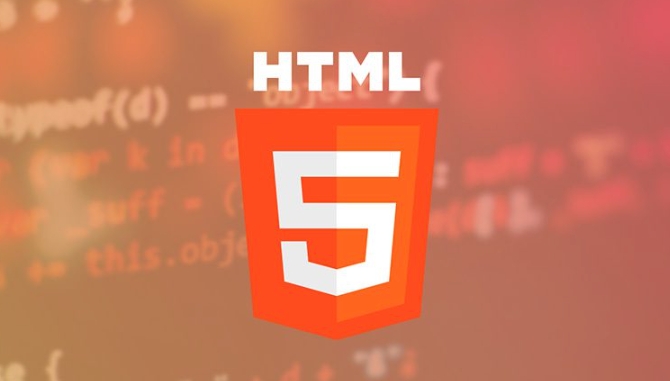Handling File Selections and Uploads with the HTML5 File API
Jul 13, 2025 am 01:17 AMHTML5's File API implements local file processing through the following steps: 1. Obtain the file: Use the <input type="file"> and FileList objects to obtain the file selected by the user; 2. Preview the picture: Use the readAsDataURL method of FileReader to achieve preview before upload; 3. Multi-file control: Use multiple and accept attributes to limit the file type and number, and traverse and verify in JS; 4. Upload the file: Use FormData to wrap data and send it to the server through fetch or XMLHttpRequest. The backend needs to support the multipart/form-data format. The entire process includes four key links: acquisition, preview, restriction and upload.

In web development, HTML5's File API provides us with the ability to process local files, including reading, previewing, and uploading files. It allows the front-end to handle the files selected by the user more flexibly without having to rely on the back-end every time.

Get the file selected by the user
When the user selects files through <input type="file"> , we can get these files through JavaScript. The most common way is to use a FileList object, which is an array of classes that contain all selected File objects.

<input type="file" id="fileInput">
Then use JS to get:
const fileInput = document.getElementById('fileInput');
fileInput.addEventListener('change', function () {
const files = this.files; // Get a FileList object console.log(files);
}); Each File object contains information such as file name, size, type, etc. For example, files[0].name is the file name, files[0].size is the number of bytes.

Note: If input does not set
multipleattribute, then only one file can be selected at a time.
Preview the selected image file
Many times we need to preview the picture before uploading, such as avatar upload or image editor. At this time, you can use FileReader to read the file content.
The sample code is as follows:
- Create a
FileReaderinstance - Read file using
readAsDataURLmethod - Get the result in
onloadcallback and assign it to the img element
const reader = new FileReader();
reader.onload = function (e) {
const preview = document.getElementById('preview');
preview.src = e.target.result;
};
reader.readAsDataURL(file);This allows you to realize local preview of the picture, and you can see the effect without uploading the server.
Multi-file upload and restriction control
Sometimes we want users to upload multiple files at once, but at the same time we don’t want them to pass a bunch of large files casually. At this time, you can combine multiple and accept attributes to enhance control.
<input type="file" multiple accept="image/*">
This code allows the user to select multiple image files. It is also very simple to traverse these files in JS:
for (let i = 0; i < files.length; i ) {
const file = files[i];
if (!file.type.startsWith('image/')) continue;
// Only process image files}You can also add size limits, such as only files smaller than 2MB are allowed:
if (file.size > 2 * 1024 * 1024) {
alert('File cannot exceed 2MB');
continue;
}Upload files to the server
Finally, we have to send the file to the server. You can use FormData to wrap the data, and then send the request in conjunction with fetch or XMLHttpRequest .
The basic process is as follows:
- Create a
FormDatainstance - Use
append()to add file fields - Send a POST request
const formData = new FormData();
formData.append('file', file);
fetch('/upload', {
method: 'POST',
body: formData
});The server can receive files like normal forms. Be careful to ensure that the backend supports the multipart/form-data format.
If it is uploading multiple files, you can append multiple times in the loop, or directly use new DataTransfer() to construct a list containing multiple files and then extract it.
Basically these are the operations. The whole process is not complicated, but each step has some small details that are easy to ignore, such as cross-domain issues, file type verification, memory release, etc. When used in actual use, you can flexibly combine it according to project requirements.
The above is the detailed content of Handling File Selections and Uploads with the HTML5 File API. For more information, please follow other related articles on the PHP Chinese website!

Hot AI Tools

Undress AI Tool
Undress images for free

Undresser.AI Undress
AI-powered app for creating realistic nude photos

AI Clothes Remover
Online AI tool for removing clothes from photos.

Clothoff.io
AI clothes remover

Video Face Swap
Swap faces in any video effortlessly with our completely free AI face swap tool!

Hot Article

Hot Tools

Notepad++7.3.1
Easy-to-use and free code editor

SublimeText3 Chinese version
Chinese version, very easy to use

Zend Studio 13.0.1
Powerful PHP integrated development environment

Dreamweaver CS6
Visual web development tools

SublimeText3 Mac version
God-level code editing software (SublimeText3)

Hot Topics
 Audio and Video: HTML5 VS Youtube Embedding
Jun 19, 2025 am 12:51 AM
Audio and Video: HTML5 VS Youtube Embedding
Jun 19, 2025 am 12:51 AM
HTML5isbetterforcontrolandcustomization,whileYouTubeisbetterforeaseandperformance.1)HTML5allowsfortailoreduserexperiencesbutrequiresmanagingcodecsandcompatibility.2)YouTubeofferssimpleembeddingwithoptimizedperformancebutlimitscontroloverappearanceand
 Adding drag and drop functionality using the HTML5 Drag and Drop API.
Jul 05, 2025 am 02:43 AM
Adding drag and drop functionality using the HTML5 Drag and Drop API.
Jul 05, 2025 am 02:43 AM
The way to add drag and drop functionality to a web page is to use HTML5's DragandDrop API, which is natively supported without additional libraries. The specific steps are as follows: 1. Set the element draggable="true" to enable drag; 2. Listen to dragstart, dragover, drop and dragend events; 3. Set data in dragstart, block default behavior in dragover, and handle logic in drop. In addition, element movement can be achieved through appendChild and file upload can be achieved through e.dataTransfer.files. Note: preventDefault must be called
 Audio and Video: can i record it?
Jun 14, 2025 am 12:15 AM
Audio and Video: can i record it?
Jun 14, 2025 am 12:15 AM
Yes,youcanrecordaudioandvideo.Here'show:1)Foraudio,useasoundcheckscripttofindthequietestspotandtestlevels.2)Forvideo,useOpenCVtomonitorbrightnessandadjustlighting.3)Torecordbothsimultaneously,usethreadinginPythonforsynchronization,oroptforuser-friend
 Adding Audio and Video to HTML: Best Practices and Examples
Jun 13, 2025 am 12:01 AM
Adding Audio and Video to HTML: Best Practices and Examples
Jun 13, 2025 am 12:01 AM
Use and elements to add audio and video to HTML. 1) Use elements to embed audio, make sure to include controls attributes and alternate text. 2) Use elements to embed video, set width and height attributes, and provide multiple video sources to ensure compatibility. 3) Add subtitles to improve accessibility. 4) Optimize performance through adaptive bit rate streaming and delayed loading. 5) Avoid automatic playback unless muted, ensuring user control and a clear interface.
 How can you animate an SVG with CSS?
Jun 30, 2025 am 02:06 AM
How can you animate an SVG with CSS?
Jun 30, 2025 am 02:06 AM
AnimatingSVGwithCSSispossibleusingkeyframesforbasicanimationsandtransitionsforinteractiveeffects.1.Use@keyframestodefineanimationstagesforpropertieslikescale,opacity,andcolor.2.ApplytheanimationtoSVGelementssuchas,,orviaCSSclasses.3.Forhoverorstate-b
 What is the purpose of the input type='range'?
Jun 23, 2025 am 12:17 AM
What is the purpose of the input type='range'?
Jun 23, 2025 am 12:17 AM
inputtype="range" is used to create a slider control, allowing the user to select a value from a predefined range. 1. It is mainly suitable for scenes where values ??need to be selected intuitively, such as adjusting volume, brightness or scoring systems; 2. The basic structure includes min, max and step attributes, which set the minimum value, maximum value and step size respectively; 3. This value can be obtained and used in real time through JavaScript to improve the interactive experience; 4. It is recommended to display the current value and pay attention to accessibility and browser compatibility issues when using it.
 HTML audio and video: Examples
Jun 19, 2025 am 12:54 AM
HTML audio and video: Examples
Jun 19, 2025 am 12:54 AM
Audio and video elements in HTML can improve the dynamics and user experience of web pages. 1. Embed audio files using elements and realize automatic and loop playback of background music through autoplay and loop properties. 2. Use elements to embed video files, set width and height and controls properties, and provide multiple formats to ensure browser compatibility.
 What is WebRTC and what are its main use cases?
Jun 24, 2025 am 12:47 AM
What is WebRTC and what are its main use cases?
Jun 24, 2025 am 12:47 AM
WebRTC is a free, open source technology that supports real-time communication between browsers and devices. It realizes audio and video capture, encoding and point-to-point transmission through built-in API, without plug-ins. Its working principle includes: 1. The browser captures audio and video input; 2. The data is encoded and transmitted directly to another browser through a security protocol; 3. The signaling server assists in the initial connection but does not participate in media transmission; 4. The connection is established to achieve low-latency direct communication. The main application scenarios are: 1. Video conferencing (such as GoogleMeet, Jitsi); 2. Customer service voice/video chat; 3. Online games and collaborative applications; 4. IoT and real-time monitoring. Its advantages are cross-platform compatibility, no download required, default encryption and low latency, suitable for point-to-point communication






